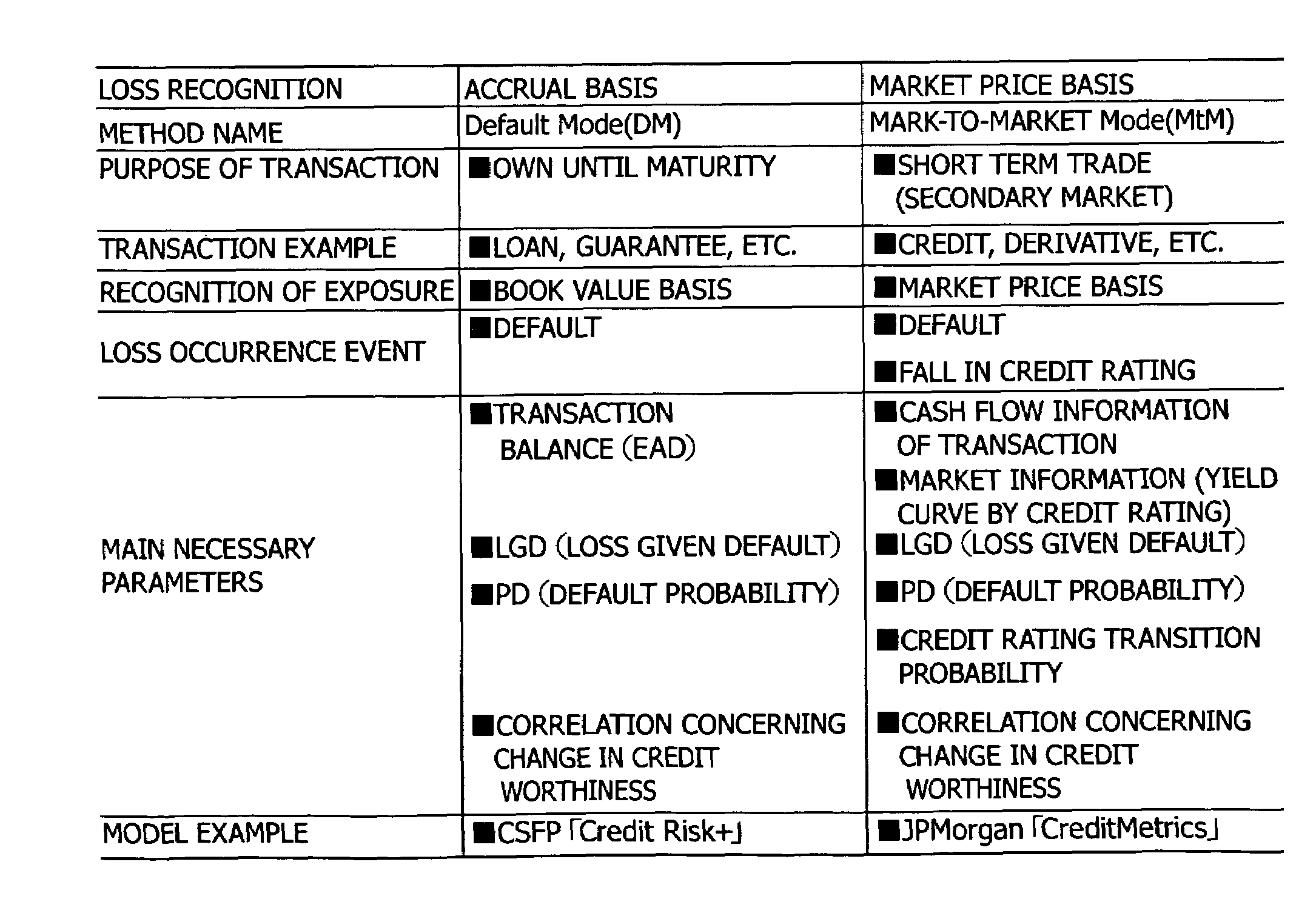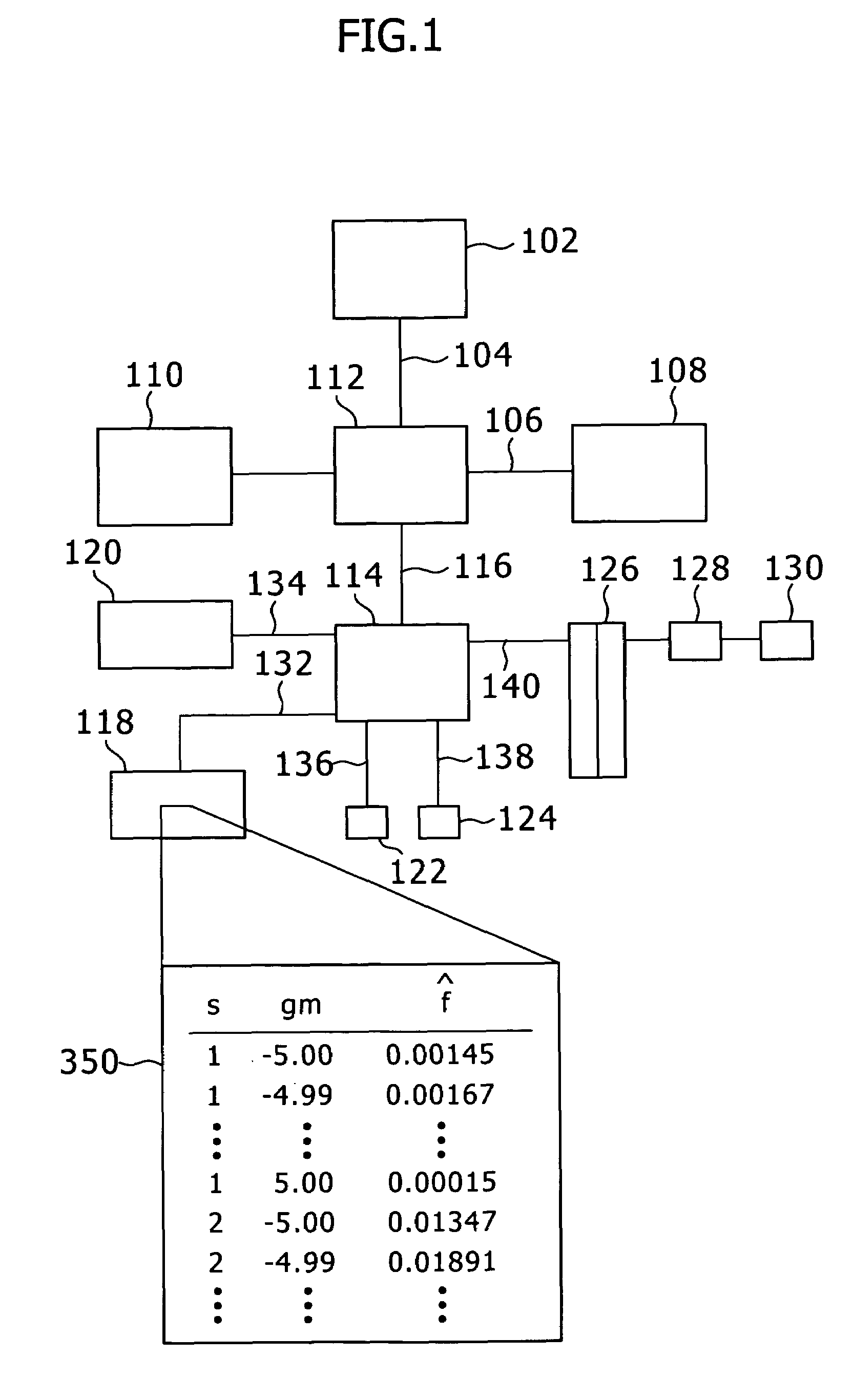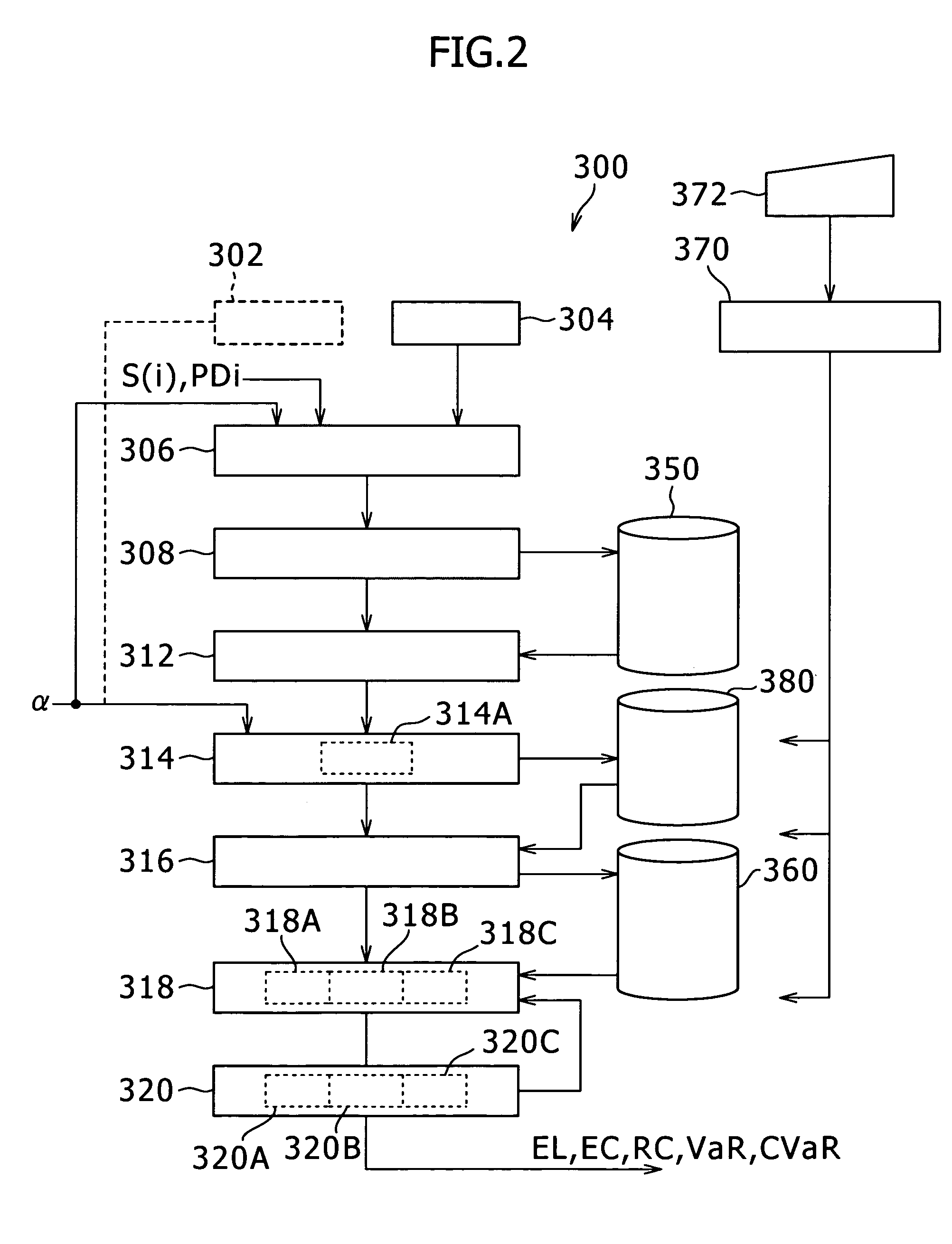Method and apparatus for calculating credit risk of portfolio
a portfolio and credit risk technology, applied in the field of methods, can solve the problems of excessive computational complexity, inability to obtain the necessary accuracy, and assumptions too restrictive for practical use, and achieve the effects of reducing the complexity of the calculation
- Summary
- Abstract
- Description
- Claims
- Application Information
AI Technical Summary
Benefits of technology
Problems solved by technology
Method used
Image
Examples
first embodiment
[0115]In an embodiment of the present invention, risk measures are quickly calculated with high precision on the basis of an analytical method by employing numerical calculation techniques. In this embodiment, a moment generating function is calculated and the probability distribution (probability density function and distribution function) concerning losses of a portfolio is calculated on the basis of the moment generating function. The moment generating function is the Laplace transform of the probability density function. Therefore, a calculation of Laplace inversion is used to calculate the probability density function from the moment generating function.
[0116]In the numerical calculation techniques according to this embodiment, formulas themselves for Laplace inversion used in the processes of calculation of risk measures are not simplified. Instead, when the calculation is performed using a real computer, a method for quick and highly accurate calculation is provided by employ...
second embodiment
[0194]In another embodiment of the present invention, the present invention can be carried out in calculation of other risk measures in which the same techniques as those in the process for performing risk measurement from information concerning a portfolio is effective. An example of calculation of risk contribution as the risk measure is explained below.
[0195]Risk contribution is a numerical value defined by the following equation:
[Formula 61]
[0196]RCiVaR=∂VaR∂Ei(61)
In other words, risk contribution is the ratio of the amount of change of a credit VaR to a very small change in the exposure Ei of the company “i”. Since VaR is a homogeneous function of degree 1 of exposures E1, E2, . . . , EN, the following equation is obtained by applying the Euler's homogeneous function theorem:
[Formula 62]
[0197]∑i=1NEi·RCiVaR=VaR(62)
The respective terms forming the sum on the left side of formula 62 can be interpreted as representing a risk amount for each of the companies. This amount is repres...
third embodiment
[0222]As still another embodiment of the present invention, a calculation method for calculating risk contribution on the CVaR basis will be explained. In the case of CVaR, risk contribution is represented as follows by a representation similar to formula 61:
[Formula 90]
[0223]RCiCVaR=∂CVaR∂Ei(90)
Concerning risk contribution on the CVaR basis, a calculation method with the Monte Carlo simulation method is known. However, even the Monte Carlo simulation method is not a practical method because an enormous number of trials is necessary to accurately calculate risk contributions in particular at a high confidence interval. Here, again, by using the method of fast Laplace inversion, it is possible to quickly and highly accurately calculate risk contributions on the CVaR basis.
[0224]First, CVaR is rewritten as follows:
[Formula 91]
[0225]CVaR≡11-p∫VaR∞tfL(t)ⅆt=11-p{EL-∫0VaRtfL(t)ⅆt}=11-p{EL-p·VaR+∫0VaRFL(t)ⅆt}
where,
[Formula 92]
[0226]EL=∑i=1NEi·PDi=∫0∞tfL(t)ⅆt(92)
Consequ...
PUM
 Login to View More
Login to View More Abstract
Description
Claims
Application Information
 Login to View More
Login to View More - R&D
- Intellectual Property
- Life Sciences
- Materials
- Tech Scout
- Unparalleled Data Quality
- Higher Quality Content
- 60% Fewer Hallucinations
Browse by: Latest US Patents, China's latest patents, Technical Efficacy Thesaurus, Application Domain, Technology Topic, Popular Technical Reports.
© 2025 PatSnap. All rights reserved.Legal|Privacy policy|Modern Slavery Act Transparency Statement|Sitemap|About US| Contact US: help@patsnap.com



